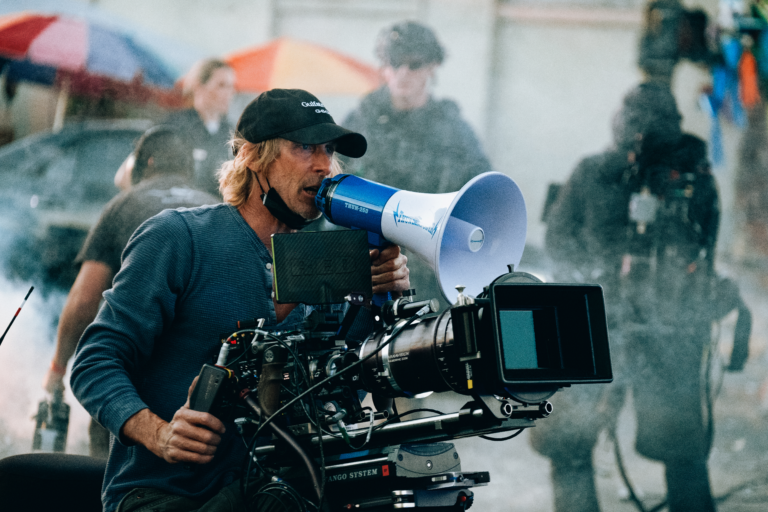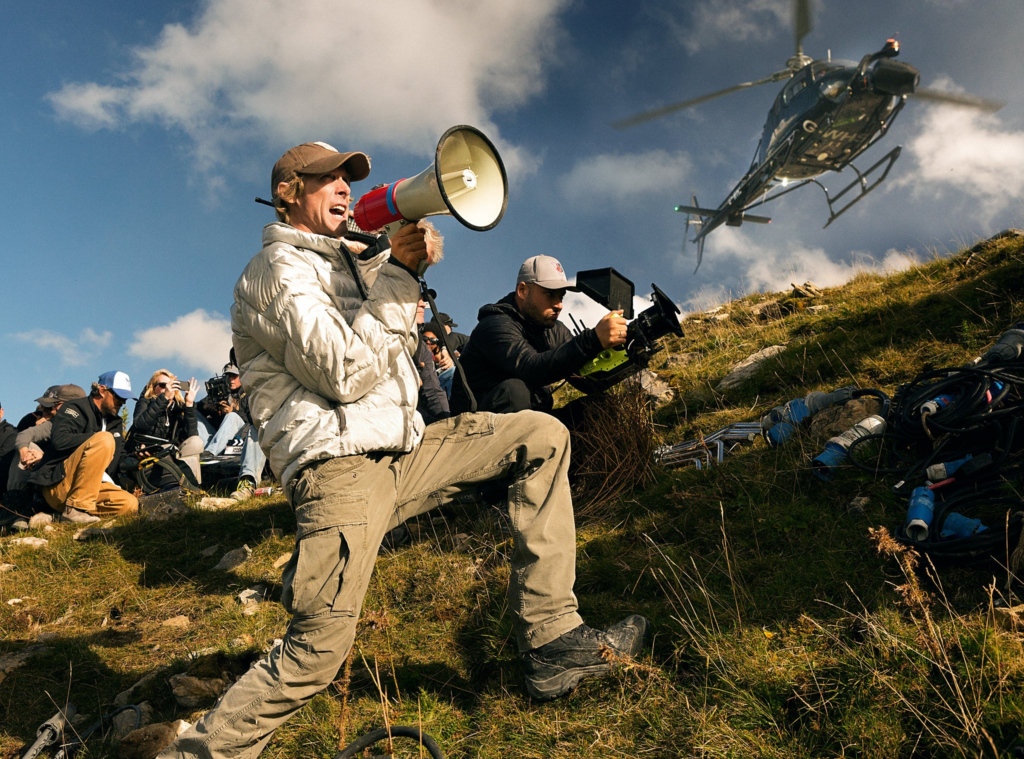
Ranking the worst (or simply least ultimate) action movie directors of all time.
Our time on this earth is finite, and we can save precious hours of lifetime knowing that when the name of a certain director pops up in the movie description or credits, it may be better to switch the channel. Hopefully we can give you some guidance with our list of the worst 10 action movie directors of all time, unless you want to enter the nether regions of action cinema yourself, but you have been warned!
10) Andy Sidaris

Here at UAMC we have great respect for old-school action movies, so you won’t find many directors from the heydays of the genre on this list, but for Andy Sidaris (and our next entry) we must make an exception. Sidaris supplied the full menu for the lower senses, erotica and action in a tropical paradise, often glued together by a flimsy espionage plot.
Even though he gave many Playboy and Penthouse models an opportunity to try their luck at acting, the erotic moments were rarely crackling with excitement, and the action scenes were sloppily filmed. Sidaris’ films have become cult flicks, and I can understand the appeal. But for me, they just never delivered the excesses promised by the VHS cover for his target group of adolescent men.
9) Godfrey Ho

In 1988, Godfrey Ho made Fatal Command, Shadow Killers Tiger Force, Ninja Dragon, Clash of the Ninjas, The Ultimate Ninja, Tough Ninja the Shadow Warrior, Ninja the Protector, The Ninja Squad, Ninja Hunt, Ninja Fantasy, Bionic Ninja, Commando Fury, Golden Ninja Warrior, Ninja Champion, Ninja Destroyer, Challenge of the Ninja and – one of his ultimate classics – Ninja Terminator.
Ho achieved such an incredible output by quickly shooting a couple of unrelated fight and dialogue scenes, adding footage from other movies (often not his own) and merging it all into one film. Ho took great care to hire fighters with no martial arts skills, capped special effects at a maximum cost of 100 USD, and possibly did the dubbing himself while washing his car. It all adds up to non-stop nonsensical fun, a maelstrom of multiple movies overlapping into 90 minutes of ninja insanity.
8) Roland Emmerich

Roland Emmerich’s films are a fine example of that bigger is not always better. His career had a promising start, giving action fans the ultimate classic Universal Soldier. It turned out to be a one-off, though, when Emmerich became one of the first directors to fully embrace CGI landscapes and special effects in Independence Day, with everything else (plot, characters, dialogues) taking a back seat to the digital spectacle.
The film was a huge success, and heralded the slow death of practical effects. Emmerich copied his own template for action-packed disaster movies many times, and every single one would be as shallow as the next. And yet almost all of them provide their share of entertainment if you want to put your brain into idle mode for two hours.
7) Paul W.S. Anderson

Anderson had a promising career start with the two bangers Mortal Kombat and Soldier. After that, he fell in love with the Resident Evil franchise. The grim and claustrophobic atmosphere of the games gave way for a glossy look, messy action sequences and bad CGI. Some of the six films had their moments, but as a whole, the movie series was thoroughly irritating,
Anderson became a master of pulling the teeth of every template. Monster Hunter, Alien Vs. Predator, The Three Musketeers, and Death Race became tame crowd-pleasers. Strangely enough, none of his films are unwatchable, it just seems that almost every one of them is a missed opportunity.
6) Uwe Boll

Labeled as one of the worst directors in movie history, it is inevitable that Uwe Boll shows up on our list. Boll unleashed some of the most terrible video game adaptations ever created on unsuspecting audiences, in a genre where the quality bar is already low. House of the Dead, Alone in the Dark, and Far Cry are completely unwatchable, and yet he still made a profit with them thanks to DVD sales and a tax subsidy for films in his home country Germany.
After the tax loophole was closed, Boll went to on redeem himself and made some actually good films! Postal became one of the best (if most polarizing) video game adaptations of all time, and with a handful of low-budget action thrillers such as Assault on Wall Street he delivered a scathing critique of capitalism.
5) Michael Bay

This entry is for the post-Bad Boys 2 Michael Bay. Bay made big waves in the action genre with hyper-stylized and furiously edited action extravaganzas such as The Rock and the Bad Boys films. All this changed when he embraced sterile CGI and moronic storytelling, and the Transformers Franchise was born. It’s hard to understate how much damage this movie series has done to action cinema, one of the biggest thorns in the side of the genre.
Each of the films would be a giant snoozefest if there wasn’t so much noise, but they were a huge success and set a dubious standard for blockbuster actioners. In recent years Bay made some attempts to correct his course with the solid Ambulance and 6 Underground, so there may yet be hope for him.
4) McG

An accomplished director of music videos, McG adapted the Charlie’s Angels TV show for the big screen. The two films became archetypal entries of early 2000s action films, with disorienting editing, action sequences that were bad copycats of The Matrix, and a script that insulted the intelligence of the audience. The Charlie’s Angels films created a whole new level of dumbness, but you may also find them deliriously delicious, if can enjoy totally braindead action entertainment.
McG also had the honor of putting the first nail into the coffin of the Terminator franchise with Terminator: Salvation, a soulless CGI fest, and a disappointment of epic proportions. Not all is bad, though, McG seems to have found a home outside the action arena with the fantastic horror comedy The Babysitter and its sequel, The Killer Queen.
3) Andrzej Bartkowiak

Bartkowiak is an esteemed cinematographer of classics such as Speed and Falling Down, but in 2000 made the monumental mistake to take a seat in the director’s chair. With Romeo Must Die, Exit Wounds, and Cradle2Grave he created an infernal trilogy of which can only be called action anti-cinema, characterized by a complete absence of coherence, intelligence and excitement.
Their editing makes a Prodigy music video look like a meditation session, the film reel used to shoot the action sequences must have been put through a meat grinder and the jarring soundtrack is a health hazard. The video store in the innermost circle of hell carries all films directed by Bartkowiak to give everlasting torment to all accursed souls dwelling there.
2) J.J. Abrams

It took just one man to bring two of the greatest Sci-Fi franchises to their knees, at least on the big screen. Most of the old Star Trek movies always put good storytelling above flashy action sequences. Abrams changed all that with the 2009 reboot Star Trek and its sequel Into Darkness. The films became indistinguishable from all the mediocre Sci-Fi actioners of their time with hectic visuals, pretty people and a disorienting story.
And for the latest Star Wars trilogy, Abrams may have been an early adopter of movie scripts written by AI: “Create a copy of the original trilogy, but don’t try to be original. Insert some fan service here and there, and make sure every film costs 200 million USD.”
1) Zack Snyder

After the huge success of 300, slow motion became Zack Snyder’s shtick. It’s certainly a cost-effective means of artificially stretching the runtime of films, but in a Snyder movie everything that happens at normal speed also comes to a screeching stand-still. The DC universe got the dubious honor of receiving the Snyder treatment, which resulted in flat CGI landscapes, tedious drama, and sucking all excitement out of the Superman films.
Justice League was the culmination of Snyder’s vision: a slow-motion nothingness, a mental void of a cosmic scale. Joss Whedon’s version is definitely better, simply because it’s two hours shorter. Snyder’s films are terrifying and depressing for all the wrong reasons, and radiate an almost unbearable cinematic nihilism.